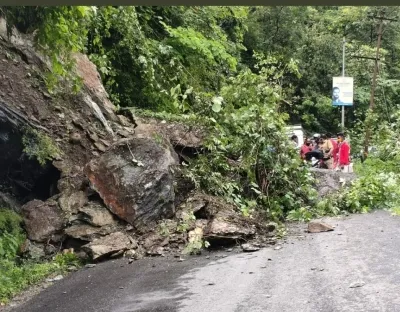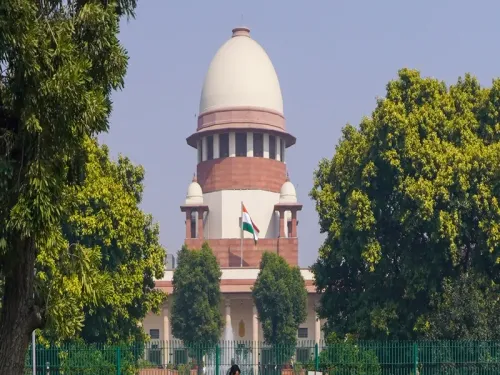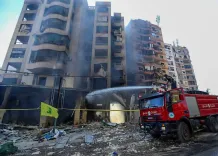How are Rescue Operations in North Bengal Evolving with Improved Weather?

Synopsis
Key Takeaways
- Rescue operations are accelerating as weather improves.
- At least 23 fatalities reported, with fears of more.
- Tourists are using alternative routes to exit the hills.
- Heavy rainfall has affected infrastructure, disrupting connectivity.
- Chief Minister Mamata Banerjee is monitoring the situation.
Kolkata, Oct 6 (NationPress) The local administration and rescue team members engaged in the flood and landslide-ravaged Terai and Dooars regions of north Bengal expressed relief as the rescue and relief efforts gained momentum due to improved weather conditions on Monday.
After experiencing scattered rainfall across various parts of North Bengal late on Sunday night and light rain early Monday, the precipitation ceased, allowing for clearer skies.
Further good news arrived from the Regional Meteorological Centre in Kolkata's Alipore, which indicated that although there could be scattered rain and thunderstorms in some of the eight districts of north Bengal on Monday, the likelihood of heavy rain later in the day was low, except for Alipurduar.
"The weather is showing signs of improvement in the north Bengal hills. While scattered rains may occur, heavy rain is not anticipated at this time, except in Alipurduar district," stated a meteorological department official.
After several days of relentless rain that had caused devastating landslides, claiming at least 23 lives as of Monday morning, the weather shifted in the hills, revealing a clear view of Kanchenjunga from Darjeeling.
No rain was reported in Darjeeling city since morning, facilitating rescue operations, which are currently being conducted at a rapid pace in the two hilly districts of Darjeeling and Kalimpong.
As conditions improved, tourists stranded in the hills for the past few days began descending to the plains starting Monday morning.
Due to landslides cutting off the primary and shortest routes from the hills to Siliguri, tourists have been opting for alternative routes, namely Tindharia Road and Pankhabari Road.
“Traffic was heavier on Tindharia Road, which is considered less remote compared to Pankhabari Road,” mentioned an official from Darjeeling.
Although the reported number of fatalities stands at 23, according to the latest data from the National Disaster Response Force (NDRF) and district administrations in Darjeeling and Jalpaiguri, officials are concerned that the true death toll may be higher as rescue and recovery efforts continue.
In the last 24 hours, approximately 261 millimeters of rain fell in the Darjeeling hills since Saturday. Consequently, water levels in all rivers across north Bengal, including the Teesta, Torsa, and Mahananda, have surged.
Numerous roads have sustained damage, leading to disrupted connectivity in several areas. Bridges and culverts have been washed away by the surging rivers.
Mirik and Sukhiya Pokhari were among the hardest hit, leaving many tourists stranded.
Chief Minister Mamata Banerjee is expected to visit north Bengal later today to oversee the ongoing rescue operations.









